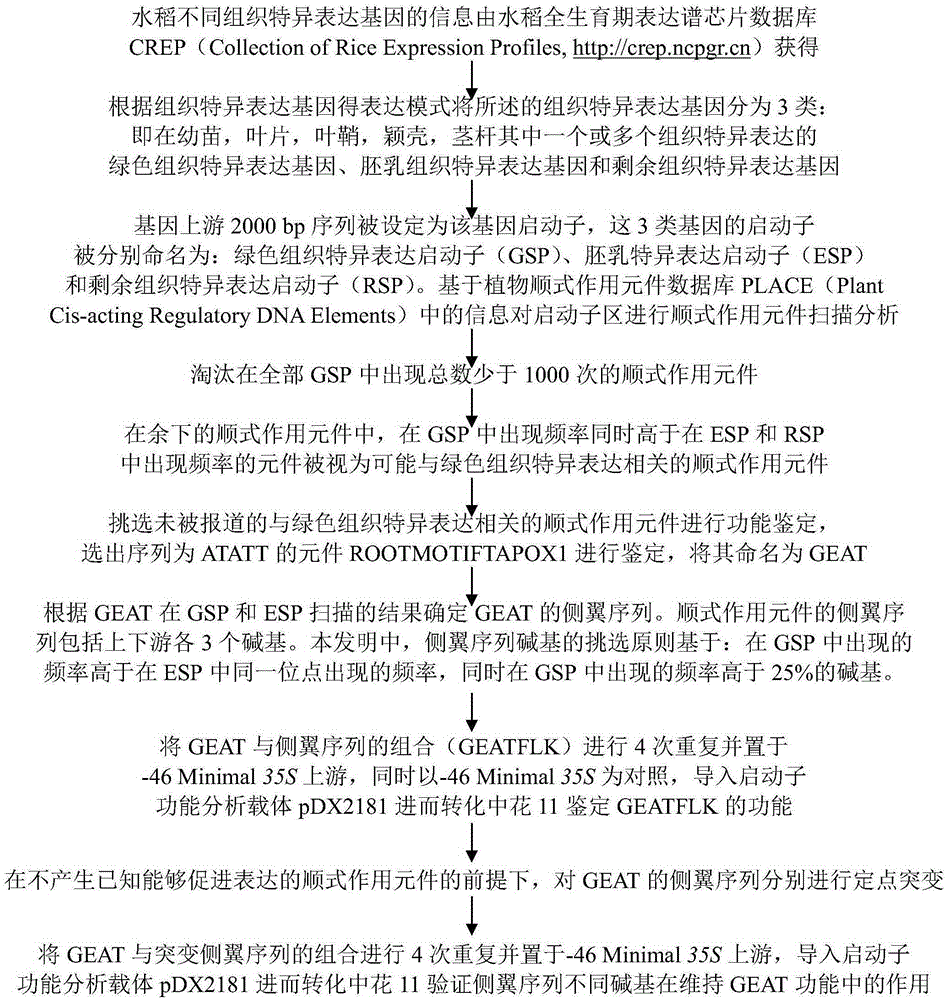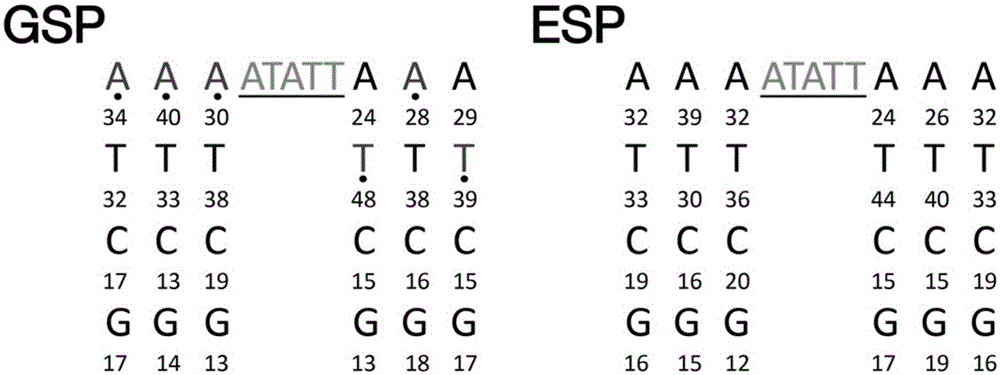Method for screening rice tissue specific expression type cis-acting element and flanking sequence thereof
A cis-acting element and tissue-specific technology, which is applied in the field of screening for the specific expression of cis-acting elements and their flanking sequences in rice tissues, can solve the problems of no relevant reports and small quantities
- Summary
- Abstract
- Description
- Claims
- Application Information
AI Technical Summary
Problems solved by technology
Method used
Image
Examples
Embodiment 1
[0036]Example 1: Screening of candidate elements related to tissue-specific expression
[0037] The information on genes specifically expressed in different tissues of rice was obtained from CREP (Collection of Rice Expression Profiles, http: / / crep.ncpgr.cn), a microarray database of rice expression profiles during the whole growth period. According to the expression pattern, all tissue-specific expression genes were divided into 3 categories: green tissue-specific expression genes (genes specifically expressed in one or more green tissues, such as: seedlings, leaves, leaf sheaths, glumes, and stems), endosperm tissue Specifically expressed genes and remaining tissue-specific expressed genes. The 2000bp sequence upstream of the gene was set as the gene promoter, and the promoters of these three types of genes were named: green tissue-specific expression promoter (GSP), endosperm-specific expression promoter (ESP) and remaining tissue-specific expression promoter (RSP). Based...
Embodiment 2
[0040] Example 2: Prediction of flanking sequences of cis-acting elements
[0041] According to the scanning results of cis-acting elements in the green tissue-specific expression promoter (GSP) and the endosperm-specific expression promoter (ESP), the flanking sequences required for its function were determined. The flanking sequence of the cis-acting element includes 3 bases respectively upstream and downstream. In the present invention, the selection principle of flanking sequence bases is based on: the frequency of occurrence in GSP is higher than that of the same site in ESP, and the frequency of occurrence in GSP is higher than 25% of the bases. The flanking sequence prediction results are as follows figure 2 shown.
Embodiment 3
[0042] Embodiment 3: Construction of plant expression vector
[0043] Unless otherwise specified, the reference method of the present invention and the corresponding routine operation of molecular biology refer to: J. Sambrook et al., "Molecular Cloning Experiment Guide (Second Edition)" (Chinese translation), Science Press, 1996 edition.
[0044] In the present invention, bioinformatics prediction is first performed on the flanking sequence of GEAT. The combination of GEAT and flanking sequence (GEATFLK, sequence shown in SEQ ID NO: 2) was repeated four times and connected downstream -46Minimal 35S promoter (named GEATFLK_MINI, structure as shown in image 3 shown), and sent to Nanjing GenScript Biotechnology Co., Ltd. for synthesis. Then GEATFLK_MINI was connected into the promoter function analysis vector pDX2181 through the Hind III and BamH I endonuclease sites respectively (for information on the vector map and multiple cloning sites, see Figure 4 ), to obtain the rec...
PUM
 Login to View More
Login to View More Abstract
Description
Claims
Application Information
 Login to View More
Login to View More - R&D
- Intellectual Property
- Life Sciences
- Materials
- Tech Scout
- Unparalleled Data Quality
- Higher Quality Content
- 60% Fewer Hallucinations
Browse by: Latest US Patents, China's latest patents, Technical Efficacy Thesaurus, Application Domain, Technology Topic, Popular Technical Reports.
© 2025 PatSnap. All rights reserved.Legal|Privacy policy|Modern Slavery Act Transparency Statement|Sitemap|About US| Contact US: help@patsnap.com



